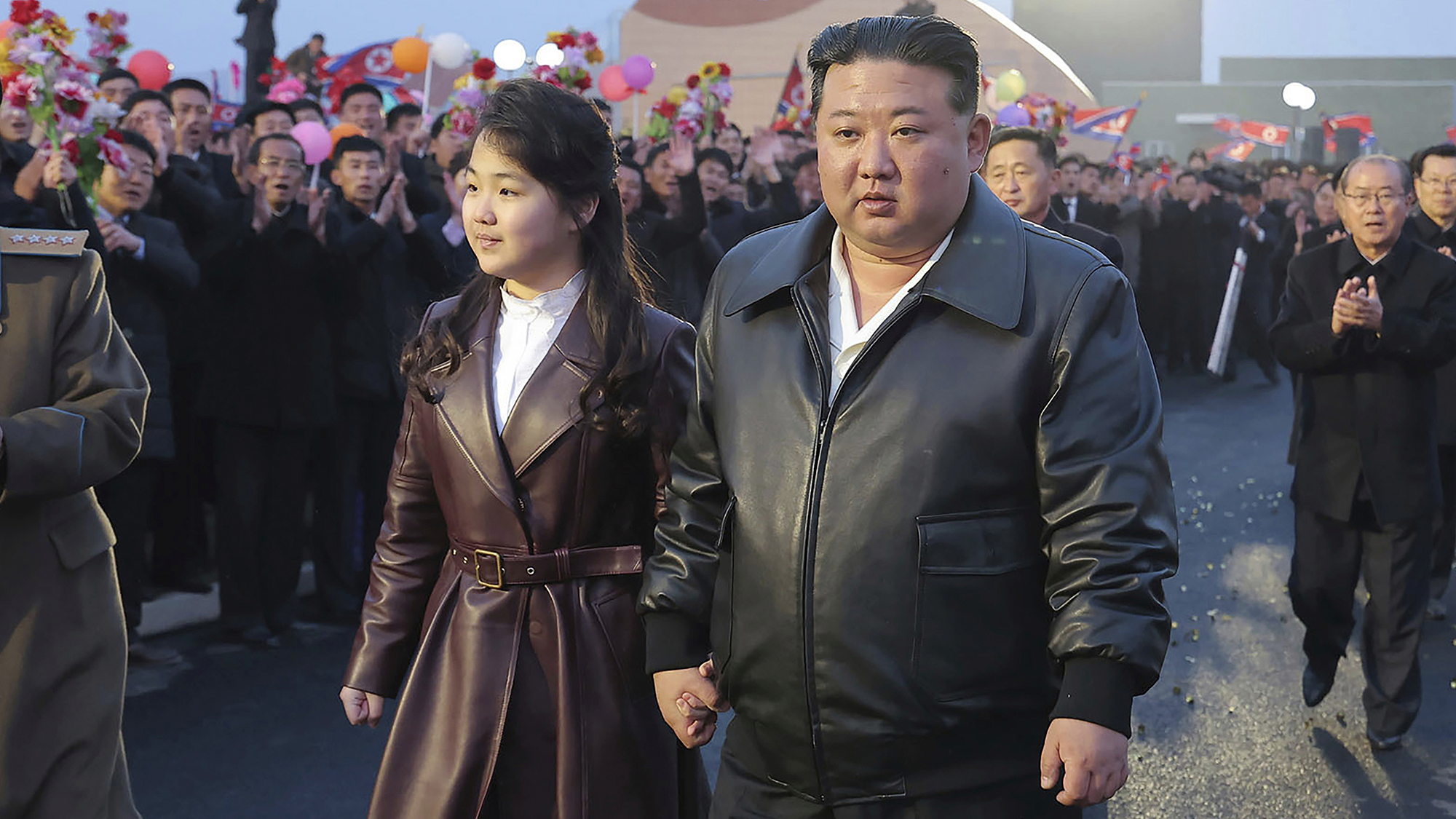North Korea reveals images of ‘monster’ ballistic missile
Photos appear to show ‘a major advance in technology and threat’

North Korea has released images of what it claims is the Hwasong-15 missile tested this week, a new intercontinental ballistic missile capable of striking the US mainland.
Dozens of photos were published in North Korean state media today. USA Today calls the missile a “monster” while CNN says the photos “a major advance in technology and threat”.
Michael Duitsman, a researcher at the Center for Nonproliferation Studies in Monterey, California, tweeted photos of the missile, which he described as a “very big missile... And I don't mean Big for North Korea. Only a few countries can produce missiles of this size, and North Korea just joined the club.”
The Week
Escape your echo chamber. Get the facts behind the news, plus analysis from multiple perspectives.

Sign up for The Week's Free Newsletters
From our morning news briefing to a weekly Good News Newsletter, get the best of The Week delivered directly to your inbox.
From our morning news briefing to a weekly Good News Newsletter, get the best of The Week delivered directly to your inbox.
The new ICBM seems to have a different engine arrangement and improved steering compared to the smaller Hwasong-14 ICBM tested twice in July, Duitsman says.
US intelligence agencies are continuing to assess claims that North Korea has developed a dangerous new type of missile.
Three US officials told ABC News that they are carrying out an analysis of Tuesday’s missile launch, and that it could be weeks before they determine if it is a new type of missile.
The most recent launch prompted some analysts to question whether North Korean leader Kim Jong Un has adopted a new style for missile launches and what it might mean. For one thing, the missile was not fired over Japan, as it has been in the past, nor was it fired into the waters around the US military’s Pacific hub of Guam. The timing was also different, with the missile test in the evening.
A free daily email with the biggest news stories of the day – and the best features from TheWeek.com
“These late tests may serve a broader strategy instead - perhaps showing that North Korea can launch a missile anytime and anywhere with little warning, as it would have to in a real wartime scenario,” Kingston Reif, director for disarmament and threat reduction policy at the Arms Control Association, told The Washington Post.
AP’s South Korea bureau chief Foster Klug says Kim showed a “glimmer of restraint” by not conducting an even more worrying atmospheric test of a nuclear weapon flying onboard a long-range missile over the Pacific.
The latest test could indicate that Kim will soon consider its nuclear program “done” and focus on its sluggish economy, Vipin Narang, a nuclear strategy expert at MIT, told AP.
South Korean newspaper Hankyoreh says that even if such a move were to see Pyongyang shift away from threats toward dialogue, the US and South Korea aren’t likely to accept such overtures at face value.
US Ambassador Nikki Haley told the UN yesterday that North Korea's missile launch “brings us closer to war”.
-
 Political cartoons for December 6
Political cartoons for December 6Cartoons Saturday’s political cartoons include a pardon for Hernandez, word of the year, and more
-
 Pakistan: Trump’s ‘favourite field marshal’ takes charge
Pakistan: Trump’s ‘favourite field marshal’ takes chargeIn the Spotlight Asim Munir’s control over all three branches of Pakistan’s military gives him ‘sweeping powers’ – and almost unlimited freedom to use them
-
 Codeword: December 6, 2025
Codeword: December 6, 2025The daily codeword puzzle from The Week
-
 Femicide: Italy’s newest crime
Femicide: Italy’s newest crimeThe Explainer Landmark law to criminalise murder of a woman as an ‘act of hatred’ or ‘subjugation’ but critics say Italy is still deeply patriarchal
-
 Brazil’s Bolsonaro behind bars after appeals run out
Brazil’s Bolsonaro behind bars after appeals run outSpeed Read He will serve 27 years in prison
-
 Americans traveling abroad face renewed criticism in the Trump era
Americans traveling abroad face renewed criticism in the Trump eraThe Explainer Some of Trump’s behavior has Americans being questioned
-
 Nigeria confused by Trump invasion threat
Nigeria confused by Trump invasion threatSpeed Read Trump has claimed the country is persecuting Christians
-
 Sanae Takaichi: Japan’s Iron Lady set to be the country’s first woman prime minister
Sanae Takaichi: Japan’s Iron Lady set to be the country’s first woman prime ministerIn the Spotlight Takaichi is a member of Japan’s conservative, nationalist Liberal Democratic Party
-
 Russia is ‘helping China’ prepare for an invasion of Taiwan
Russia is ‘helping China’ prepare for an invasion of TaiwanIn the Spotlight Russia is reportedly allowing China access to military training
-
 Interpol arrests hundreds in Africa-wide sextortion crackdown
Interpol arrests hundreds in Africa-wide sextortion crackdownIN THE SPOTLIGHT A series of stings disrupts major cybercrime operations as law enforcement estimates millions in losses from schemes designed to prey on lonely users
-
 Kim Ju Ae: North Korea’s next leader?
Kim Ju Ae: North Korea’s next leader?The Explainer Kim Jong Un’s young daughter is being seen as his ‘recognised heir’ following a high-profile public appearance at China summit